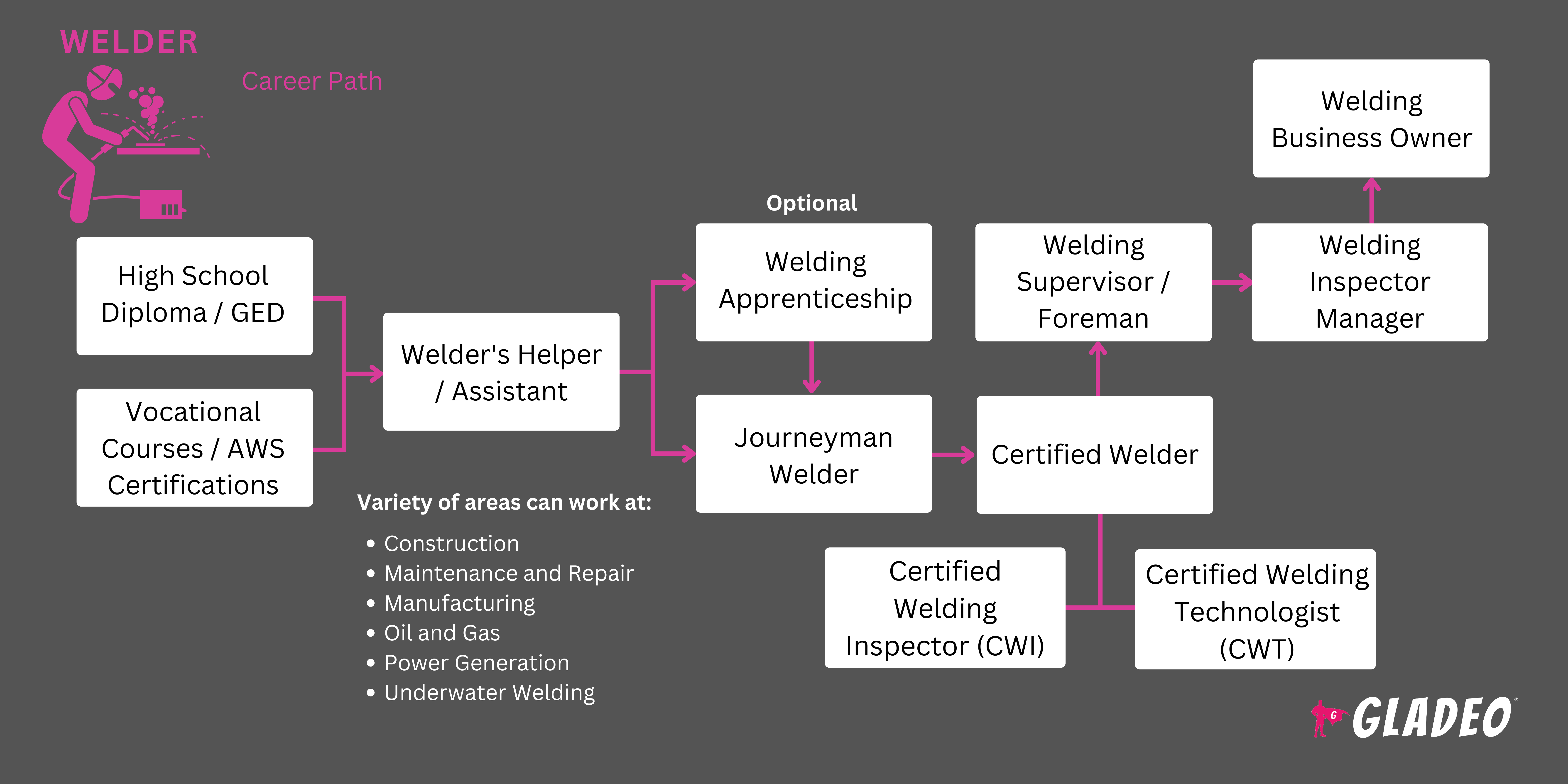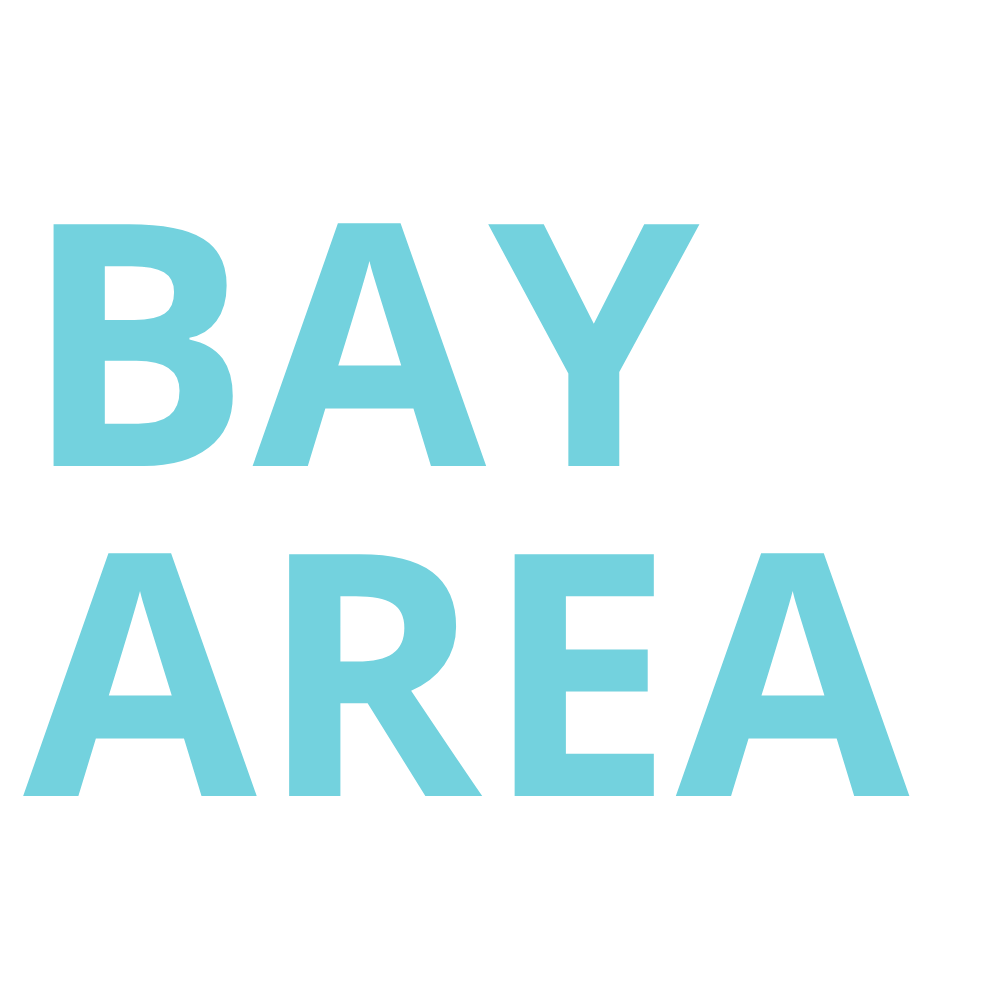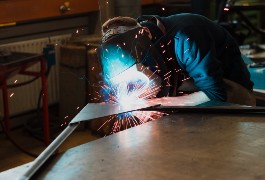Mga spotlight
Assembly Line Brazer, Brazer, Fabrication Welder, Maintenance Welder, MIG Welder (Metal Inert Gas Welder), Solderer, TIG Welder (Tungsten Inert Gas Welder), Welder, Welder Fitter, Wirer, Cutter at Fitters
Isipin ang isang mundo na walang mga tulay, skyscraper, o kahit na mga kotse. Ano ang pagkakatulad ng lahat ng mga bagay na ito? Umaasa sila sa husay at katumpakan ng mga Welder upang pagsama-samahin ang mga ito!
Ang mga welder ay ang gulugod ng hindi mabilang na mga industriya na ating pinagkakatiwalaan. Binubuhay nila ang mga blueprint sa pamamagitan ng pagbabago ng mga hilaw na materyales sa mga natapos na produkto, pagbuo ng mga metal na balangkas para sa lahat mula sa mabibigat na makinarya hanggang sa matatayog na istruktura at sasakyang ginagamit sa himpapawid, lupa, at dagat.
Ang mga welder ay sinanay na ligtas na magtrabaho gamit ang mga mapanganib na kasangkapan (tulad ng mga sulo, electric arc machine, plasma cutter, at grinder) upang pagdugtungan, gupitin, at hubugin ang mga bahaging metal. Sa ~30 iba't ibang uri ng welding mula sa basic hanggang advanced at specialized, mayroong isang pamamaraan na angkop para sa halos bawat aplikasyon at pangangailangan sa industriya.
Kung masisiyahan ka sa pagtatrabaho gamit ang iyong mga kamay, paglutas ng mga problema, at paglikha ng mga bagay na binuo para tumagal, maaari kang maputol para sa isang karera sa welding!
- Paglikha at pag-aayos ng mga kritikal na istruktura at bahagi
- Paggawa gamit ang mga advanced na tool at teknolohiya
- Ang pagiging bahagi ng isang napakahusay at iginagalang na kalakalan
- Mga pagkakataong magtrabaho sa magkakaibang industriya at kapaligiran
" Sa karamihan ng mga sitwasyon kung saan ang welding ay kasangkot, ikaw ay nasa isang posisyon kung saan ikaw ay isang mahalagang link ng isang chain kapag nagtatrabaho sa mga proyekto, " ang isinulat ni Darrell Cates, welder at mekaniko sa Hall Fabrication and Racing sa California.
" Nagbibigay-daan ito sa iyo na ipakita ang iyong mga kasanayan bilang isang welder at inilalarawan na ang mga kasanayan ng isang welder ay kasinghalaga ng iba pang mga kasanayang kinakailangan upang makumpleto ang proyektong iyon. Nagbibigay ito sa iyo ng pakiramdam ng kasiyahan sa sarili, isang gantimpala para sa pagiging bahagi ng isang pagsisikap ng pangkat."
Oras ng trabaho
Ang mga welder ay karaniwang nagtatrabaho ng full-time, na may potensyal na mag-overtime upang matugunan ang mga deadline. Maaari silang magtrabaho sa mga setting tulad ng mga garahe, mga bodega ng pabrika, mga lugar ng konstruksiyon, at mga shipyard.
Mga Karaniwang Tungkulin
- Talakayin ang mga partikular na proyekto sa mga kliyente o tagapamahala, kung kinakailangan.
- Piliin ang naaangkop na paraan ng hinang, kagamitan, at materyales.
- Basahin at bigyang-kahulugan ang mga blueprint, sketch, at teknikal na guhit upang maunawaan ang mga detalye ng proyekto.
- Ilatag at iposisyon ang mga bahagi para sa pagpupulong.
- Ihanay at i-clamp ang mga workpiece bago magwelding.
- Maghanda ng mga materyales sa pamamagitan ng paglilinis, paggupit, o paggiling ng mga metal na ibabaw.
- Painitin o painitin ang mga bahagi ng metal upang alisin ang mga stress at maghanda ng mga materyales.
- I-weld ang mga bahagi sa flat, vertical, o overhead na posisyon, kung kinakailangan.
- Subaybayan at ayusin ang init, bilis, o mga rate ng feed.
- Siyasatin ang mga hinang na ibabaw at istruktura upang matiyak na nakakatugon ang mga ito sa mga pamantayan at detalye ng kalidad.
- Subukan ang mga welded na istraktura gamit ang mga visual na inspeksyon o iba pang mga pamamaraan ng pagsubok.
- Kilalanin at i-troubleshoot ang mga depekto at gumawa ng mga pagkukumpuni.
- Magpatakbo ng mga gilingan, drill, o iba pang tool upang tapusin at pakinisin ang mga welded surface.
- Magsagawa ng regular na pagpapanatili at pagkakalibrate sa mga kagamitan at kasangkapan sa hinang.
Karagdagang Tungkulin
- Sundin ang mga protocol sa kaligtasan at magsuot ng personal na kagamitan sa proteksyon.
- Makipagtulungan sa iba pang mga tradespeople, tulad ng mga pipefitter o fabricator, sa magkasanib na mga proyekto.
- Sanayin at pangasiwaan ang mga apprentice o junior welder.
- Manatiling updated sa mga pagsulong ng industriya at mga bagong teknolohiya.
- Panatilihin ang mga talaan ng mga materyales, mga detalye, at mga pagbabago para sa mga proyekto ng hinang.
- Magpatupad ng mga programa sa pagtitiyak ng kalidad at tiyakin ang pagsunod.
- Gumawa ng mga custom na bahagi o prototype batay sa mga natatanging disenyo.
- Panatilihing malinis at walang mga potensyal na panganib ang mga lugar ng trabaho.
- Suportahan ang mga pang-emerhensiyang pag-aayos at mga paggamot pagkatapos ng pag-weld.
Tandaan, ang mga tungkulin ng Cutters , Solderers , at Brazers ay malapit na nauugnay sa Welders! Lahat sila ay gumagana sa mga metal at init upang hubugin, pagdugtungin, o lansagin ang mga materyales, ngunit ang kanilang mga partikular na pamamaraan at mga aplikasyon ay nagbubukod sa kanila.
Halimbawa, dalubhasa ang Cutters sa paghihiwalay at paghubog ng mga bahaging metal gamit ang mga high-temperature na tool tulad ng mga plasma cutter, oxy-fuel torches, o laser cutter. Ang kanilang tungkulin ay mahalaga sa katha at dekonstruksyon (pagbuwag sa malalaking istruktura tulad ng mga barko, pipeline, o mabibigat na makinarya).
Ang mga solderer at brazer, sa kabilang banda, ay nakatuon sa pagsali sa mga bahagi ng metal. Karaniwang gumagana ang mga solderer sa mas mababang temperatura upang mag-bond ng maliliit at maselang bahagi, na ginagawang mahalaga ang kanilang mga kasanayan sa mga larangan tulad ng electronics at pagmamanupaktura ng alahas.
Samantala, ang mga Brazer ay gumagamit ng mas mataas na temperatura upang pagsamahin ang magkakaibang mga metal, na lumilikha ng matibay, lumalaban sa kaagnasan na mga bono na angkop para sa mga produktong nagtitiis sa pagkasira o malupit na kapaligiran. Binabalot din ng mga brazer ang mga bahagi upang mapahusay ang tibay at pagganap.
Magkasama, ang lahat ng natatanging ngunit magkakaugnay na mga propesyon ay bumubuo ng isang mahalagang bahagi ng mga industriya ng metalworking!
Soft Skills
- Kakayahang magtrabaho nang nakapag-iisa
- Kakayahang umangkop
- Pansin sa detalye
- Kritikal na pag-iisip
- Kagalingan ng kamay
- Kakayahang umangkop
- Manu-manong kagalingan ng kamay
- Organisasyon
- Pagtitiyaga
- Pagtugon sa suliranin
- Pagkamaparaan
- Kamalayan sa kaligtasan
- Tamang paghuhusga at paggawa ng desisyon
- Lakas at tibay
- Malakas na kasanayan sa komunikasyon
- Pagtutulungan ng magkakasama
- Pamamahala ng oras
- Visualization
Teknikal na kasanayan
Ang mga welder ay nangangailangan ng mga teknikal na kasanayan na may kaugnayan sa mga sumusunod na lugar:
- Mga blueprint/teknikal na diagram
- Computer-aided design (CAD) software (hal., AutoCAD, SolidWorks)
- Kagamitang pangkagipitan at pangkaligtasan
- Mga tool sa layout ng paggawa (hal., mga sistema ng pagkakahanay ng laser, mga instrumento sa pagsukat ng katumpakan)
- Mga tool sa pagsubaybay sa init at temperatura (hal., mga infrared thermometer, pyrometer)
- Software sa pagsusuri ng materyal na ari-arian
- Metalurhiya at mga katangian ng materyal
- Non-destructive testing software
- Simulation software para sa mga proseso ng welding (hal., Simufact Welding, ANSYS)
- Mga diskarte sa paghihinang
- Paghahanda sa ibabaw at kagamitan sa pagtatapos (hal., mga sander, abrasive blasting tool)
- Welding automation system (hal., robotic welding arms , programmable logic controllers)
- Dokumentasyon ng welding at pagsubaybay sa sertipikasyon
- Inspeksyon ng welding at kontrol sa kalidad
- Welding at welding inspection software (hal., WeldShop, WeldOffice, Hypertherm ProNest)
- Mga kasanayan sa kaligtasan sa welding
- Ang mga diskarte sa welding, depende sa papel, ay kinabibilangan ng:
- Mga diskarte sa entry-level:
- Mga advanced na uri ng welding:
- Mga espesyal na uri ng hinang:
- Mga tool at kagamitan sa welding (hal., mga gilingan, sulo, clamp)
- Industriya ng aerospace
- Industriya ng kagamitang pang-agrikultura
- Industriya ng sasakyan
- Mga kumpanya sa konstruksyon
- Mga kontratista ng depensa at militar
- Mga halaman sa paggawa
- Mga tindahan ng gawa sa metal
- Mga operasyon sa pagmimina
- Mga kumpanya ng oil at gas extraction
- Mga kumpanya sa pagtatayo at pagpapanatili ng pipeline
- Mga pasilidad sa pagbuo ng kuryente
- Pagpapanatili at pagmamanupaktura ng riles
- Mga sektor ng nababagong enerhiya (hal., pagtatayo ng wind turbine)
- Mga laboratoryo ng pananaliksik at pagpapaunlad
- Mga sculpture studio
- Mga pasilidad sa paggawa ng barko at pagkumpuni
Ang mga welder ay dapat na patuloy na naghahatid ng mataas na kalidad, matibay na mga weld na sumusunod sa mahigpit na mga pamantayan sa kaligtasan at industriya. Nangangailangan ito ng paninindigan sa katumpakan at kasanayan dahil kahit ang maliliit na di-kasakdalan ay maaaring makompromiso ang integridad ng istruktura.
Ang trabaho ay maaaring magsama ng mahabang oras, paulit-ulit na mga gawain, at masikip na mga deadline, lalo na sa mga industriya tulad ng konstruksiyon at pagmamanupaktura. Bilang karagdagan, ang mga kondisyon sa pagtatrabaho ay maaaring maging mahirap, na may ilang mga gawain na ginagawa sa mga nakakulong na espasyo, sa napakataas na taas, o sa ilalim ng matinding temperatura.
Ang welding ay madalas na nagsasangkot ng pagkakalantad sa matinding liwanag, usok, at sparks, na ginagawang mahalaga ang personal na kagamitan sa proteksyon at pagsunod sa mga protocol sa kaligtasan. Maaaring mayroon ding ilang mabigat na pag-angat at mahabang panahon ng pagtayo o pagyuko.
Sa mga tuntunin ng mga iskedyul, maaaring kailanganin ng mga Welder na magtrabaho ng mga night shift o weekend, o maaaring hilingin na maglakbay para sa mga espesyal na proyekto. Ang mga sakripisyong ito ay maaaring makapinsala sa balanse sa trabaho-buhay, lalo na para sa mga nagtatrabaho sa mga industriya gaya ng paggawa ng barko, paggawa ng pipeline, o pagmamanupaktura at pagpapanatili ng aerospace kung saan maaaring malayo sila sa bahay.
Binabago ng mga teknolohikal na pagsulong ang industriya ng welding, na nangunguna sa automation at robotics. Halimbawa, patuloy na binabago ng mga robotic welding system ang mga linya ng produksyon, lalo na sa mga sektor na may mataas na dami tulad ng pagmamanupaktura ng sasakyan. Ang laser at friction stir welding ay nagdaragdag ng kakayahang sumali sa mga kumplikadong materyales nang mahusay, na nagbibigay-daan sa mga Welder na tumutok sa iba pang mga gawain.
Nakakaakit din ang mga eco-friendly na diskarte gaya ng low-emission flux-cored wire at solar-powered welding machine . Maraming mga kumpanya ang nagpapatibay ng mga kasanayan sa pag-recycle ng mga materyales at mga prosesong matipid sa enerhiya upang bawasan ang kanilang carbon footprint habang pinapanatili ang mga pamantayan ng kalidad.
Habang umuunlad ang industriya, makakasabay ang mga Welder sa mga umuusbong na teknolohiya at pamamaraang ito sa pamamagitan ng pagkuha ng mga kursong propesyonal sa pagpapaunlad. Makakatulong ang pagsasanay sa robotic welding, non-destructive testing, advanced metalurgy, at iba pang modernong paksa upang matiyak na mananatiling mapagkumpitensya ang mga manggagawa at maa-access ang mas maraming pagkakataon para sa pagsulong sa karera.
" Ang welding sa espasyo ay ang kasalukuyang nangungunang gilid na nagtutulak ng mga pag-unlad. At ang pang-industriya na konstruksiyon ay palaging nagpapabuti ng mga pamamaraan at pamamaraan, na nagtutulak sa industriya ng pasulong. " - Darrell Cates
Ang mga welder ay madalas na nasisiyahan sa mga hands-on na aktibidad, tulad ng paggawa ng mga modelo, pagtatrabaho sa mga kotse, o pagsali sa mga libangan sa paggawa ng metal. Malamang na may kaugnayan sila sa mga gawaing may katumpakan at paglutas ng problema, pati na rin ang pagkahumaling sa kung paano ginagawa at inaayos ang mga bagay.
" Ang mga kasanayan sa welding ay may napakalawak na aplikasyon. Iyon ay nagbibigay ng malawak na potensyal na spectrum sa anumang "araw sa buhay" para sa isang welder. Halimbawa, maaari kang maging isang benchtop welder na nagtatrabaho ng 8 am - 5 pm, 40 oras na linggo. O maaaring isang pipeliner na gumagawa ng 15-oras na araw, anim na araw sa isang linggo. O marahil isang underwater welder na nagtatrabaho ng 30 araw at 60 araw ay tumatagal ng 12 oras sa ilalim ng tubig. ng mga pagpipilian!" - Darrell Cates
- Ang mga welder ay nangangailangan ng kahit isang high school diploma o katumbas. Ang mga kurso sa matematika, agham, at tindahan sa panahon ng high school ay nagbibigay ng isang kapaki-pakinabang na pundasyon.
- Ang pagkumpleto ng isang pormal na programa sa pagsasanay sa welding sa isang vocational school, community college, o technical institute ay kapaki-pakinabang at mukhang maganda sa isang aplikasyon sa trabaho.
- Ang ilang mga employer ay nagbibigay ng buong on-the-job na pagsasanay sa pamamagitan ng mga apprenticeship na nagtatrabaho sa ilalim ng patnubay ng isang bihasang Welder.
- Ang mga karaniwang paksa sa edukasyon at pagsasanay ay kinabibilangan ng:
- Basic at advanced na mga diskarte sa welding
- Pagbabasa ng blueprint
- Mga diskarte sa pagputol
- Kontrol ng init at pamamahala ng pagbaluktot
- Pinagsamang disenyo at mga diskarte sa paghahanda
- Metalurhiya
- Mga gas na nagtatanggol
- Pag-troubleshoot
- Mga uri ng welds
- Welding automation at robotic system
- Mga code at pamantayan ng welding
- Kaligtasan sa hinang
- Mga simbolo at terminolohiya ng welding
- Ang mga mag-aaral ay maaaring matuto ng mga espesyal na pamamaraan ng welding (hal., pipe welding, underwater welding, aluminyo at hindi kinakalawang na asero
welding), advanced na proseso (tulad ng laser welding at electron beam welding), at welding sa mga partikular na kapaligiran (gaya ng high-pressure, high-heat, o mapanganib na mga kondisyon). - Ang mga opsyonal na sertipikasyon na inaalok ng American Welding Society o iba pang mga organisasyon ay kadalasang ninanais ng mga employer. Kasama sa mga opsyon ang:
- Sertipikadong Associate Welding Inspector
- Certified Resistance Welding Technician
- Sertipikadong Robotic Arc Welding
- Sertipikadong Welder Program
- Sertipikadong Welding Engineer
- Sertipikadong Welding Inspector
- Sertipikadong Welding Supervisor
- Kwalipikasyon sa Pagganap ng Welder at Sertipikasyon ng Welder
- Ang patuloy na edukasyon ay mahalaga upang manatiling updated sa mga bagong welding tool, diskarte, at pamantayan ng industriya.
- Isaalang-alang ang halaga ng matrikula, mga diskwento, at mga pagkakataon sa lokal na iskolarsip, bilang karagdagan sa pederal na tulong.
- Siguraduhin na ang programa ay kagalang-galang at may mga modernong pasilidad at kagamitan. Tingnan din ang mga instructor ng programa at ang kanilang mga background.
- Maghanap ng mga programang nag-aalok ng maraming hands-on na pagsasanay.
- Tandaan, ang ilang mga kurso ay mainam para sa online na pagdalo, tulad ng American Society of Mechanical Engineers' Practical Welding Technology – Virtual Classroom. Ngunit kakailanganin mo pa rin ang real-world na pagsasanay upang mailapat ang iyong natutunan.
- Tingnan kung ang programa ay nag-post ng mga istatistika ng paglalagay ng trabaho at mga koneksyon sa mga lokal na employer.
- Magbasa ng mga review mula sa mga nakaraang estudyante o magtanong sa mga tao sa mga online na forum.
- Kumuha ng mga kurso sa matematika, pisika, at mga klase sa tindahan. Kung maaari, mag-sign up para sa welding-related community college o vocational classes habang nasa high school.
- Ang ilang mga mataas na paaralan ay magbabayad para sa mga klase na ito at hahayaan kang makakuha ng dalawahang kredito. Makipag-usap sa iyong akademikong tagapayo!
- Magpa-certify mula sa American Welding Society o kumuha ng mga kurso mula sa American Society of Mechanical Engineers .
- Makilahok sa mga welding o metalworking club at mga kumpetisyon.
- Humanap ng mga internship o part-time na trabaho kung saan makakakuha ka ng on-the-job na pagsasanay at bumuo ng mga hands-on na kasanayan.
- Bumuo ng isang portfolio na nagpapakita ng iyong mga proyekto at kasanayan sa welding.
- Manood ng mga video na nauugnay sa welding sa mga channel sa YouTube (tulad ng channel ng Weld.com ) at turuan ang iyong sarili sa pamamagitan ng mga welding na libro, welding magazine , at online na mga artikulo.
- Tanungin ang isang nagtatrabahong Welder kung mayroon silang oras upang gumawa ng isang interbyu sa impormasyon sa iyo.
- Magpasya kung anong uri ng mga diskarte sa entry-level ang gusto mong ituon sa pag-aaral, gaya ng:
- Metal Inert Gas (MIG)
- Flux-Cored Arc
- Gas Metal Arc
- Oxy-Acetylene
- Lugar ng Paglaban
- Shielded Metal Arc
- Tandaan, maraming employer sa mga skilled trade, kabilang ang welding, ang nagsasagawa ng substance test bilang bahagi ng kanilang proseso sa pag-hire upang matiyak ang ligtas na kapaligiran sa pagtatrabaho. Ang paggamit ng mga kagamitan sa hinang ay maaaring maging mapanganib, kaya ang mga tagapag-empleyo (at mga kompanya ng seguro) ay kailangang bawasan ang mga panganib.
" Ang mga bagay na kailangang nasa advanced na posisyon ng welding ay matematika sa pinakamababa, na mas pinipili ang advanced na matematika. Ang pagguhit at pag-draft sa pamamagitan ng kamay at computer, din. Ang pisikal na fitness ay susi din dahil ang larangang ito ay maaaring maging mahirap." - Darrell Cates

- Makipag-ugnayan sa mga propesyonal sa industriya ng welding at mag-rack ng mas maraming nauugnay na karanasan hangga't maaari sa paaralan o sa iyong sarili.
- Ang mga website tulad ng Glassdoor , Indeed , USAJOBS , Jobs In Welding , American Welding Society , o SimplyHired ay magandang panimulang punto para sa paghahanap ng mga trabaho. Maghanap ng mga pagkakataon sa apprenticeship sa Apprenticeship.gov .
- Humingi ng tulong sa kawani ng mga serbisyo sa karera ng iyong paaralan sa mga resume, kunwaring panayam, at paghahanap ng trabaho. Makipag-ugnayan sa iyong network para ipaalam sa kanila na naghahanap ka ng trabaho.
- I-screen nang mabuti ang mga ad ng trabaho para matiyak na natutugunan mo ang mga kinakailangan at may tamang karanasan.
- Maghanap ng mahahalagang keyword na gagamitin sa iyong resume/application, tulad ng:
- Arc welding
- Pagbabasa ng blueprint
- Nagpapatigas
- Paggawa
- Paggiling
- Pagputol ng metal
- MIG o TIG welding
- Hinang ng tubo
- Pagputol ng plasma
- Pagsunod sa kaligtasan at kontrol sa kalidad
- Structural welding
- Mga certification sa welding (hal., AWS, ASME)
- Pagpapanatili ng kagamitan sa hinang
- Inspeksyon ng hinang
- Suriin ang mga template ng resume ng Welder upang makakuha ng mga ideya para sa pag-format at pagbigkas ng parirala.
- Makisali sa mga online na forum at magtanong ng mga tanong sa payo sa karera.
- Brush up sa iyong welding terminolohiya .
- Tanungin ang iyong mga propesor, superbisor, at mga kapantay kung magsisilbi silang mga personal na sanggunian. Kunin ang kanilang pahintulot bago mo ibigay ang kanilang impormasyon, bagaman.
- Hanapin ang mga karaniwang tanong sa panayam ng Welder . Maaaring kabilang sa mga halimbawa ang: "Maaari mo bang ilarawan ang iyong karanasan sa iba't ibang pamamaraan ng welding, tulad ng MIG, TIG, o stick welding, at magbigay ng mga halimbawa ng mga proyekto kung saan mo ginamit ang mga ito?" o "Paano mo tinitiyak ang kaligtasan at pinapanatili ang mga pamantayan ng kalidad kapag gumagawa sa isang proyekto ng hinang?"
- Palaging magsuot ng angkop para sa tagumpay sa pakikipanayam sa trabaho!
- Makipag-usap sa iyong superbisor tungkol sa kung paano ka uunlad. Ipaalam sa kanila na handa kang magpatumba ng karagdagang pagsasanay na iminumungkahi nila.
- Alamin kung ang iyong tagapag-empleyo ay handa na sakupin o ibalik sa iyo ang mga gastos sa pagtuturo para sa mga kurso sa welding.
- Kumuha ng mga sertipikasyon ng American Welding Society tulad ng:
- Certified Resistance Welding Technician
- Sertipikadong Robotic Arc Welding
- Sertipikadong Welding Inspector
- Sertipikadong Welding Supervisor
- Alamin ang mga advanced o espesyal na uri ng welding gaya ng:
- Gas Tungsten Arc Welding
- Plasma Arc Welding
- Nakalubog na Arc Welding
- Thermite Welding
- Tungsten Inert Gas (TIG)
- Electron Beam Welding
- Pagsabog Welding
- Manatiling aktibo sa mga propesyonal na organisasyon upang matuto ng mga bagong bagay at mapalago ang iyong network.
- Hamunin ang iyong sarili na magtrabaho sa mas kumplikadong mga proyekto.
- Kung kinakailangan, mag-aplay para sa mga trabahong nag-aalok ng higit na potensyal na pagsulong.
Mga website
- American National Standards Institute (ANSI)
- American Welding Society (AWS)
- Fabricators & Manufacturers Association International (FMA)
- International Brotherhood of Boilermakers
- Lokal na Unyon ng mga Manggagawa sa Bakal 29
- Pambansang Sentro para sa Edukasyon at Pagsasanay sa Welding
- Society of Manufacturing Engineers (SME)
- Ang Tagapaggawa
- United Association (UA) Welders
- Pinagkaisang Samahan ng mga Journeymen at Apprentice ng Plumbing and Pipefitting Industry (UA)
- Weld.com
- Welding Digest
- Welding Journal
- Mga Tip at Trick sa Welding
Mga libro
- Welding: Mga Prinsipyo at Aplikasyon , ni Larry Jeffus
- Modern Welding , ni Andrew Althouse, et. al.
- Welding for Dummies , ni Steven Robert Farnsworth
Ang mga welder ay gumaganap ng isang mahalagang papel sa isang malawak na hanay ng mga mahahalagang industriya, ngunit maaari itong maging isang mahirap na trabaho kung minsan. Para sa mga nag-iisip ng mga alternatibo, ang mga nauugnay na karera ay kinabibilangan ng:
- Boilermaker
- Taga-install ng Gabinete
- Tagagawa ng kabinet
- CAM Programmer
- karpintero
- Taga-install ng Ceiling Tile
- CNC Machinist
- Inspektor ng Konstruksyon at Gusali
- Manggagawa sa Konstruksyon
- Drywall Installer
- Electrician
- Taga-install ng Sahig
- Furniture Finisher
- Pangkalahatang Maintenance at Repair Worker
- HVAC Technician
- Industrial Machinery Mechanic
- Insulation Worker
- Lathe at Turning Machine Tool Setter
- Machinist
- Masonry Worker
- Gumagawa ng Modelo
- Tubero
- Plasterer
- Roofer
- Sheet Metal Worker
- Solar Photovoltaic Installer
- Structural Metal Fabricator at Fitter
- Tile at Stone Setter
- Mga Gumagawa ng Tool at Die
- Operator ng Woodworking Machine
" Ang mga huling iniisip ay — ang karerang ito ay isa na matatagpuan sa buong mundo, sa lupa at dagat, sa mainit at malamig, at sa loob o labas! Ito ay mahirap at mahirap na trabaho, ngunit kapaki-pakinabang. " - Darrell Cates
Newsfeed

Mga Tampok na Trabaho

Mga Online na Kurso at Tool

Mga Inaasahan sa Taunang Sahod
Nagsisimula ang mga bagong manggagawa sa paligid ng $49K. Ang median na suweldo ay $60K bawat taon. Ang mga may karanasang manggagawa ay maaaring kumita ng humigit-kumulang $71K.
Mga Inaasahan sa Taunang Sahod
Nagsisimula ang mga bagong manggagawa sa paligid ng $58K. Ang median na suweldo ay $65K bawat taon. Ang mga may karanasang manggagawa ay maaaring kumita ng humigit-kumulang $80K.
Mga Inaasahan sa Taunang Sahod
Nagsisimula ang mga bagong manggagawa sa paligid ng $48K. Ang median na suweldo ay $60K bawat taon. Maaaring kumita ng humigit-kumulang $72K ang mga may karanasang manggagawa.
Mga Inaasahan sa Taunang Sahod
Nagsisimula ang mga bagong manggagawa sa paligid ng $49K. Ang median na suweldo ay $60K bawat taon. Ang mga manggagawang may mataas na karanasan ay maaaring kumita ng humigit-kumulang $67K.
Mga Inaasahan sa Taunang Sahod
Nagsisimula ang mga bagong manggagawa sa paligid ng $49K. Ang median na suweldo ay $58K bawat taon. Ang mga manggagawang may mataas na karanasan ay maaaring kumita ng humigit-kumulang $68K.







